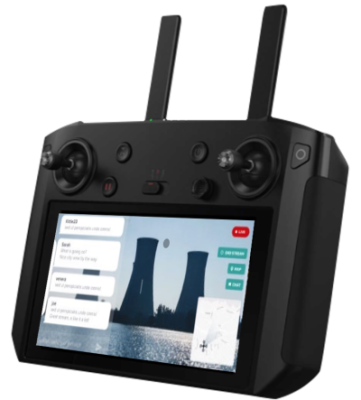Drone technologies are proving to be disruptive in a number of industries from construction and security to inspections and public safety and emergency response. But because drones are still relatively new, many programs get started with a healthy dose of skepticism and very little funding. Nowhere is this more apparent than in public safety and emergency response. Budgets are always tight and decisions are made by groups of people that may not understand the true value or cost of having a quality drone program. This has always complicated the adoption of a technology that can make lives better and communities safer.
We are always on the lookout for businesses that understand the financial and operational constraints that some of these drone programs find themselves in. One company that recently caught our attention was DRONESTREAM, which was specifically aimed at providing live video and data streaming as a service to public safety organizations and other entities who require real-time broadcasting to conduct their business.
We had the opportunity to connect with Dennis Babych, CTO of DRONESTREAM at his office in Kiev, Ukraine.
“We received a call from a person in the UK asking us to develop an application to stream live video from a drone,” said Dennis when asked about how DRONESTREAM got started. “The premise was fascinating, and we saw a business opportunity to expand that application to offer it as a service.”
That call from the UK was from Harry Howe, an entrepreneur and potential customer to Dennis’ software company DB2.
 Harry eventually became a partner and together they founded DRONESTREAM, which enables drone pilots to effortlessly broadcast video, map positioning, communication and more in real-time, while also allowing organizations to collaborate with their drone crews anywhere in the world without delay.
Harry eventually became a partner and together they founded DRONESTREAM, which enables drone pilots to effortlessly broadcast video, map positioning, communication and more in real-time, while also allowing organizations to collaborate with their drone crews anywhere in the world without delay.
Harry is now the CEO of the company.
“We created an infrastructure that allowed us to offer the cloud service anywhere in the world,” explained Dennis. “And we suddenly found ourselves on the leading edge of a technology that had the potential to save lives and offer enhanced safety to work forces and communities around the world.”
Today, DOWNSTREAM is used by police and fire departments all over the world to stream video of their emergencies, creating efficiencies and increasing safety in situations of crisis. Within the construction and infrastructure industries, surveyors use DRONESTREAM to get eyes on the job site so that subject matter experts can act on the information from a safe and remote location.
 It is fascinating to see how people who are not part of the unmanned industry can see the opportunity and develop affordable and accessible solutions for a technology that is changing the way we do things today.
It is fascinating to see how people who are not part of the unmanned industry can see the opportunity and develop affordable and accessible solutions for a technology that is changing the way we do things today.















Comments